| VARIETY |
DESCRIPTION |
| 1. Cinnamon |
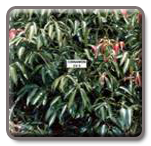 |
| YCD 1 (1995) |
|
It is a selection from the germplasm of open pollinated seedlings from Yercaud. It come to harvest from third year and can be maintained economically for 20 years. High dry bark yield of 359.75 quills and 3800 kg of dried leaves /ha with high bark recovery (35.3%). It has a 2.8 % volatile oil and in 3% quills and leaves. High regeneration capacity of 19.2 harvestable shoots in a harvest. The quills are sweet and light pungent. It is well adapted under 500m to 1000m above MSL and areas receiving 1000 to 2000 mm rainfall. |
PPI (Ci) 1 (2003) |
It is a selection from the germplasm of open pollinated seedlings maintained at HRS, Pechiparai. The tree can be retained upto 50 years. It is tolerant to drought and resistant to pest and diseases. It is suitable for coppicing at an interval of 18 – 24 months and has good regeneration capacity. June – July is found to be the best season. It yields about 980 kg bark / ha (248.42 kg of quills and 731.58 kg of chips and dust) which is 25 percent higher than Pechiparai local. It is well adopted at lower elevation (100 – 500m), high rainfall with wide range of soil. |
| Top |
| 2. Coriander |
CO 1 (1977) |
It is a selection from a germplasm type. The crop duration is 110 days and yields 500 kg grains per hectare. The variety is suitable for both greens and grains. |
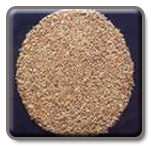 |
| CO 2 (1982) |
|
It is a reselection from a type P2 of Gujarat. The duration is 90 to 100-days and yields 600 to 700kg of grains per hectare with 22 per cent increase over CO.1. It is a dual-purpose variety suited for both grains and greens. |
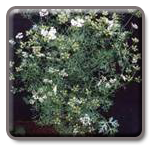 |
| CO 3 (1991) |
|
It is a reselection from accession 695 introduced from IARI, New Delhi. It has a high yield potential of 275.6 kg/ha in Kharif and 644 kg/ha in Rabi season. The crop comes to maturity earlier by about 5 days in Kharif and 6 days in Rabi compared to CO.2. This variety registered lower incidence of wilt and gray mould. The seeds are of medium size with an attractive brownish yellow colour. The 1000 seed weight is 16.2 g as against 15 g. in CO.2.The seed oil content ranges from 0.38 to 0.41%. In the adaptive research trials, this variety has recorded higher yields ranging from 4.6 to 7l.4 per cent than CO.2. |
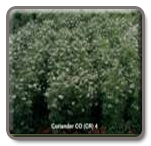 |
| CO 4 |
|
It is a single line selection from Lam (Andhra Pradesh) type. It is fast growing plant with short internodes, high yielder (590 kg /ha in irrigated and 540 kg/ha under rainfed) in a short duration of 65-70 days. The grains are bold, light yellow in colour with 0.41 per cent essential oil content. It is suitable for cultivation throughout Tamil Nadu during June-July and Oct-Nov months. |
| Top |
| 3. Fennel |
 |
| CO 1 (1985) |
|
It is a selection from a local type introduced from Gujarat. It yields 566.8 kg/ha grain in duration of 200-215 days. The plants are medium stature with profuse branching (10.2) and more number of umbels (31.1 per plant). This can be grown as a pure crop or as a border crop along with long duration crops like chillies, turmeric etc. |
| Top |
| 4. Fenugreek |
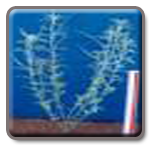 |
| CO 1 (1982) |
|
It is a reselection from a type TG 2336, introduced from North India. The crop duration is 75-80 days and yields 600 kg of grain/ha. It is a dual-purpose variety suited for both greens and grains. |
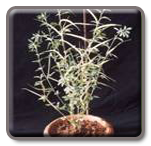 |
| CO 2 (1999) |
|
It is a selection from germplasm collection (CP 390) with a crop duration of 85-90 days released from Horticultural College and Research Institute, Coimbatore. It is a high yielding medium stature and recorded lesser incidence of root rot. It yields 481.8 kg/ha of grains, which was superior in yield over CO.1 by 21.3%. Adapted to Coimbatore, Dharmapuri, Cuddalore, Ramnad, Trichy and Karur districts of Tamil Nadu. |
| Top |
| 5. Tamarind |
 |
| PKM 1 (1992) |
|
It is a clonal selection from a local type Endapuli. It yields on an average 263.3 kg/tree as against 165.0 kg/tree in the local. The yield increase is 59 percent over local. It bears fruit in clusters of 3-7. The fruits are characteristically semicircle in shape. The pulp recovery is 39 percent as against 28 percent in the local. A characteristic white colour will be observed in the inner side of pulp indicating its superior quality. This selection has a high tartaric acid (17.1 per cent) and ascorbic acid (3.95 mg/100g) contents. |
| Top |
| 6. Turmeric |
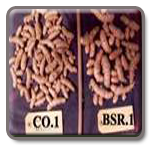 |
| CO 1 (1983) |
|
It is a vegetative mutant selection from Erode local turmeric. The crop duration is 270 days. It yields 35 t/ha. Rhizomes are bigger in size and bright orange coloured and better than Erode local. The curcumin content of rhizome is 3.2 per cent with 20 per cent processing recovery. Plants are robust, vigorous and taller (40-60 cm) with more leaves (25-32) and tiller production (3.7 to 5.0). |
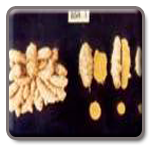 |
| BSR 1 (1986) |
|
It is a selection from mutant population irradiated with X-ray. The crop duration is 280 days. It yields 31 t /ha of fresh rhizomes and 6 tonnes of dried rhizomes. The rhizomes are attractive with yellow fingers and closer internodes. The processing ratio is 20 per cent. The rhizome contains 4.2 per cent curcumin, which is higher than CO.1 and Erode local. |
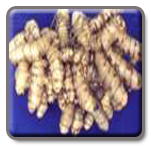 |
| BSR 2 (1994) |
|
It is an induced mutant from Erode local type. The crop yields 32 t/ha in a duration of 240-250 days. The plants are medium stature, high yielding and resistant to scale insects .The variety is adaptable to Erode, Coimbatore, Salem, Dharmapuri, Trichirapalli, Thanjavur, North Arcot and South Arcot districts. |
| CO -2 |
- High curcumin content (4.02%), highly resistant to rhizome rot, field tolerant to thrips, shoot borer, leaf folder & scale insects
- Duration - 250-260
- Yield - 42 tonns fresh rhizome /ha
|
| Top |

